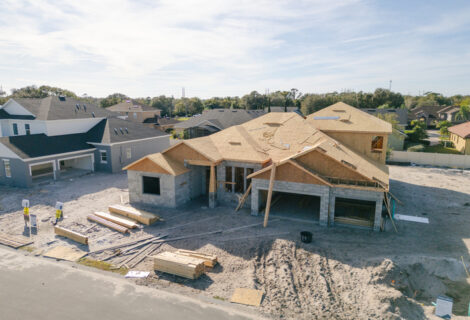How to Use Construction Loans Effectively
Construction costs have skyrocketed over the past few years, putting pressure on property developers and business owners to find sustainable financing solutions. Whether you’re working on a commercial real estate venture or a large-scale residential project, managing your cash flow is crucial to success.
One of the best financial tools at your disposal is a construction loan—a short-term financing option that provides funds in installments as your project progresses. These loans help mitigate financial risk, ensure you have consistent capital, and can even cover unexpected setbacks during construction.
This guide will walk you through everything you need to know about construction loans, including their benefits, requirements, and how to use them effectively for long-term projects.
What is a Construction Loan?
A construction loan is a unique short-term financing option designed specifically for construction projects. Unlike traditional term loans, construction loans provide funding in installments, referred to as “draws.” These draws are released when specific phases of construction are completed, ensuring that funds are allocated only when milestones are achieved.
Here’s how it works:
- Flexible Payments: You only pay interest on the amount that has been drawn, helping you manage costs efficiently.
- Short-Term Nature: Most construction loans last around 12 to 18 months, though the timeline can vary depending on the scope of the project.
- Conversion Options: Some residential construction loans convert into traditional mortgages once the project is complete.
This phased financing approach helps reduce financial risks and ensures that funds are tied closely to the project’s progress.
Benefits of Construction Loans
Construction loans are increasingly relied on by developers for several reasons:
- Phased Payouts to Manage Cash Flow: Unlike a lump-sum term loan, receiving your funds in installments ensures that your budget remains balanced throughout the project.
- Cost Oversight: Lenders release draws only after verifying that project milestones are met, which adds an extra layer of accountability.
- Customizable Terms: Many lenders work with you to tailor repayment terms based on your project’s timeline and projected return on investment (ROI).
By aligning financial support with the construction timeline, construction loans minimize cash flow interruptions and keep your project on track.
What You Need to Qualify for a Construction Loan
Securing a construction loan requires meeting stricter requirements compared to traditional loans. Here’s what you’ll likely need to provide your lender to demonstrate your financial and project viability:
1. Strong Credit and Financial History
Lenders want assurance that you can manage the financial demands of a construction project. A solid credit score and clean financial health record are essential.
2. Down Payment
You’ll need to make a significant down payment, typically between 20–25% of the total loan amount.
3. Appraisal Report
Your lender will want a property appraisal to assess the estimated value of the property or structure once the project is complete.
4. Project Plan or Blue Book
The “Blue Book” includes detailed plans for your project, such as timelines, budgets, construction phases, and repayment strategies.
Preparing these documents beforehand will streamline the approval process and make you a more attractive loan candidate.
How Construction Loans Reduce Financial Risk
Lenders often view construction loans as high-risk due to their unsecured nature. To mitigate this risk, they impose stricter requirements and more actively monitor your project’s progress.
- Phase-Linked Draws: Lenders may require proof that certain milestones are completed (e.g., foundation work, framing) before releasing additional funds.
- Detailed Oversight: Having a comprehensive and realistic Blue Book reduces uncertainty for both you and the lender.
- Stricter Eligibility: Meeting credit, cash flow, and down payment requirements ensures you won’t overextend your financial resources.
By requiring borrowers to meet these conditions, lenders can better guide projects toward successful outcomes while minimizing the risk of budget overruns.
How to Use Construction Loans for Long-Term Success
To maximize the benefits of a construction loan while minimizing risks, it’s crucial to approach it as part of a broader project strategy. The following steps can help you effectively integrate a construction loan into your long-term plans.
Plan Your Entire Project in Advance
A clear roadmap allows you to align your draws to your project phases and repayment schedule. Include detailed budgets, timelines, and contingency plans in your Blue Book.
Build in Extra Budget for Setbacks
Allocate 10–15% of your budget for unexpected delays, changes in material costs, or compliance issues.
Engage Financial Experts
Partner with an accountant or bookkeeper who has experience in construction projects to ensure draws and repayments are managed efficiently.
Keep Communication Open
Regularly update your lender on project progress to maintain oversight and address concerns proactively.
Choosing the Right Construction Loan
Selecting the right loan—and lender—can make or break your project’s success. Consider these tips to choose wisely:
- Compare Rates and Terms: Look beyond interest rates—evaluate repayment terms, prepayment penalties, and overall costs.
- Choose Regional Lenders or Credit Unions: Local lenders often have more experience with construction loans and may offer tailored advice.
- Understand LTC and LTV Ratios: Your Loan-to-Cost (LTC) and Loan-to-Value (LTV) ratios will affect your terms. Keep them under 80% for more favorable conditions.
Common Pitfalls and How to Avoid Them
Even the most carefully planned projects can encounter obstacles. Here are three common issues and strategies to prevent them.
1. Under-Budgeting
If your initial budget is too small, cash flow interruptions might delay progress or prevent you from completing your project.
- Solution: Work with an accountant to analyze costs and request itemized quotes from contractors to build a realistic budget.
2. Failing to Plan for Contingencies
Unforeseen challenges like labor shortages or weather delays can derail timelines and increase costs.
- Solution: Set aside 10–15% of your budget for unexpected issues and stay ahead of permitting and compliance requirements.
3. Borrowing More Than You Can Repay
Taking on too much debt can strain cash flow and increase financial risks for your business.
- Solution: Carefully calculate the amount you need and avoid exceeding 80% Loan-to-Cost or Loan-to-Value ratios.
Leveraging Construction Loans for Long-Term Growth
For developers and property investors, construction loans provide an invaluable solution to the challenges of financing large-scale projects. These loans offer a structured approach to funding by aligning draws with project phases, maintaining cash flow, and mitigating financial risks.
By securing the right loan, planning ahead, and managing resources effectively, you’ll be well-positioned to complete your current project successfully—and set the stage for future growth.
Need help planning your finances or understanding construction loan options? Reach out to one of our partners for tailored advice and resources to get started.





